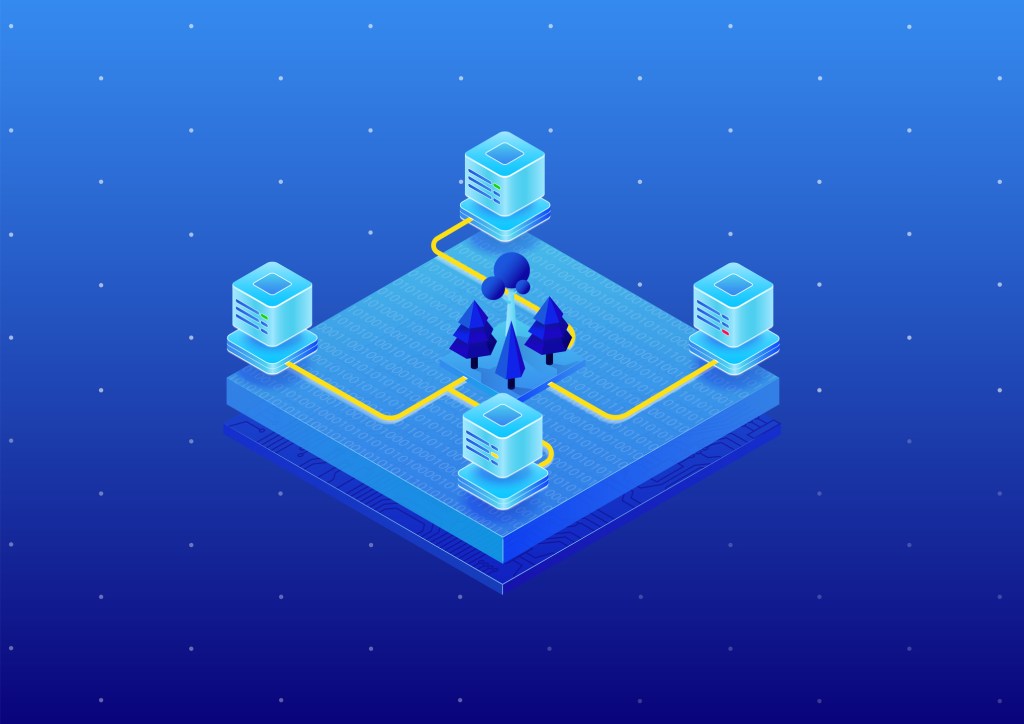As the crypto space has grown in popularity, some of the most popular blockchains have struggled to meet user demand.
New projects are aiming to tackle issues like notoriously high energy use, hefty gas fees and low transaction throughput that are plaguing some of the major blockchain networks. Ethereum, for one, has announced plans to switch this year from its energy-intensive proof-of-work mechanism, which relies on mining rigs to validate transactions, to a more sustainable proof-of-stake system that allows users to help validate the network’s transactions by temporarily depositing, or staking, a certain amount of Ethereum tokens.
Founded in 2018, Subspace Labs just announced it has raised $32.9 million to further develop an entirely new blockchain that aims to balance scalability, security and sustainability, its co-founder and CEO Jeremiah Wagstaff told TechCrunch in an interview.
Wagstaff said that while “third-generation” blockchains such as Cardano, Solana and even the revamped Ethereum (known as ETH 2.0) are more scalable than their older counterparts, they still make security and decentralization tradeoffs inherent to the proof-of-stake system. Subspace, which Wagstaff called “the first fourth-generation blockchain,” is unique in that it scales linearly — as the number of nodes on the Subspace network increases, the cost of doing a transaction decreases.
Although proof-of-stake is more eco-friendly than proof-of-work, Wagstaff claims it is “not fair or permissionless,” because it perpetuates inequality as those who already hold large amounts of tokens reap larger rewards for mining, likening proof-of-stake protocols to plutocracies. Instead of rewarding users based on a “one coin, one vote” system, like in proof-of-stake, Subspace uses a so-called proof-of-capacity protocol, which has users leverage their hard drive disk space to validate transactions.
While proof-of-capacity systems have generally been proven to use less energy than proof-of-work systems, there have been concerns about the e-waste costs associated with the networks and their effect on global supply chains. Although proof-of-capacity experiments have been tried before, most notably by BitTorrent co-founder Bram Cohen’s Chia blockchain, Wagstaff claims that Subspace’s “one disk, one vote” system is even more energy-efficient and has other benefits, including file storage.
Beyond its consensus mechanism, Wagstaff says Subspace allows for data to be stored far more cheaply than on other blockchains by incentivizing users to run archival nodes, which store historical data relating to a particular blockchain. To store data on Subspace, “you just write data into the history [of the blockchain], but we’ve sort of designed it this way from the get-go, so that there is a pricing function for it. It gets cheaper as you have more storage on the network,” Wagstaff said.
Storage can be particularly important for NFT holders, who normally don’t store the data associated with their digital assets directly on the blockchain on which the NFT was minted because of the high cost. NFT holders using a marketplace such as OpenSea might have the data associated with their NFTs stored on the Ethereum blockchain while the actual media assets themselves are stored on peer-to-peer file storage systems like The InterPlanetary File System (IPFS). Subspace can also link to most other blockchains as an external storage provider, and it provides a more permanent storage solution than IPFS, Wagstaff said.
“You can actually store your data on Subspace and IPFS at the same time. Subspace is kind of like the cold storage layer, where it’s always there forever, and IPFS is the way to get it really quickly when it’s popular,” Wagstaff said. Even if a storage provider or crypto exchange goes down, or goes out of business, Subspace would still provide an availability layer to unlock that data, he added.
Pantera Capital led Subspace’s latest round alongside the likes of Coinbase Ventures, Crypto.com, Alameda Research, ConsenSys Mesh and other venture firms and strategics. Prior to this round, Subspace raised a $4.5 million seed round last summer, and before that, it was funded entirely by grants from the U.S. National Science Foundation and the Web3 Foundation, according to the company.
Wagstaff said he plans to use the new proceeds to grow the globally distributed Subspace Labs team from 12 employees today to around 40 people by the end of 2022. Subspace will also use the capital to expand its integrations with projects on other blockchains and build a dedicated product team to support its Subspace Meta Services (SMS) segment, which provides tools and interfaces to crypto users and developers to help them manage their activity across multiple chains.































Comment